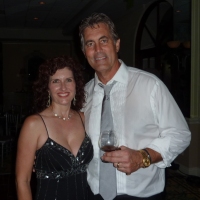As a Musician, when I hear or read the word “rhythm” I automatically think about musical rhythm…types of musical rhythms, how they are used and played, how they affect a particular piece of music (or song), etc.
However, this article opened my eyes to a whole other world related to ‘rhythm’ which I found fascinating!
What do you think of when you hear or see the word “rhythm”? I’m curious to find out!
Read this short article and then post a comment letting us all know what you think and feel. I can’t wait to see all of your responses!
I’m sure Author Daryl would like to hear your comments as well, so feel free to click-through to his page and participate in his discussion, too.
The iamb is a metric foot in poetry composed of an unstressed syllable followed by a stressed. Words such as “insist,” “betray,” and “arrest” demonstrate the iamb quite nicely. The heartbeat as typically rendered is roughly iambic, and I’ve read speculation that it is the heart’s iambic tendency that makes us gravitate toward the iambic foot in poetry (sonnets are made of iambs). I’m not sure I believe that, but I am confident that we quickly develop a sense of speech rhythm. Even people who couldn’t name a metric foot if it stepped on them typically have a sense of when a sentence is said wrong. We don’t usually add stress to little words like “a” and “the,” for example, and avoiding adding such stress isn’t something we have to think about.Of course, rhythm occurs not just at the small scale of words and phrases. Sentences have rhythms. Paragraphs have rhythms. Reading a paragraph of short sentences begins to feel after a while like being on the losing end of a very fast and exhausting game of ping-pong. Reading a paragraph of very long, complex sentences can also be taxing because you can begin to feel lost within the prose. Of course, there’s not a set recipe you can follow. I can’t prescribe two medium sentences followed by two short sentences followed at last by a long one. Different types of writing are best served by different rhythms, and I think you have to write by feel rather than by some arbitrary rule.As an exercise, consider writing a brief paragraph of very short sentences. Then play around with making some of the sentences complex (splice them together with conjunctions like “and” and “but”). Pay attention to which sentence configurations you find most appealing. What makes a given arrangement more appealing to you than another? Can you think of ways in which you might use different sentence lengths to accomplish different rhetorical goals?Now let us know what you think of when you hear the word “rhythm”! |


